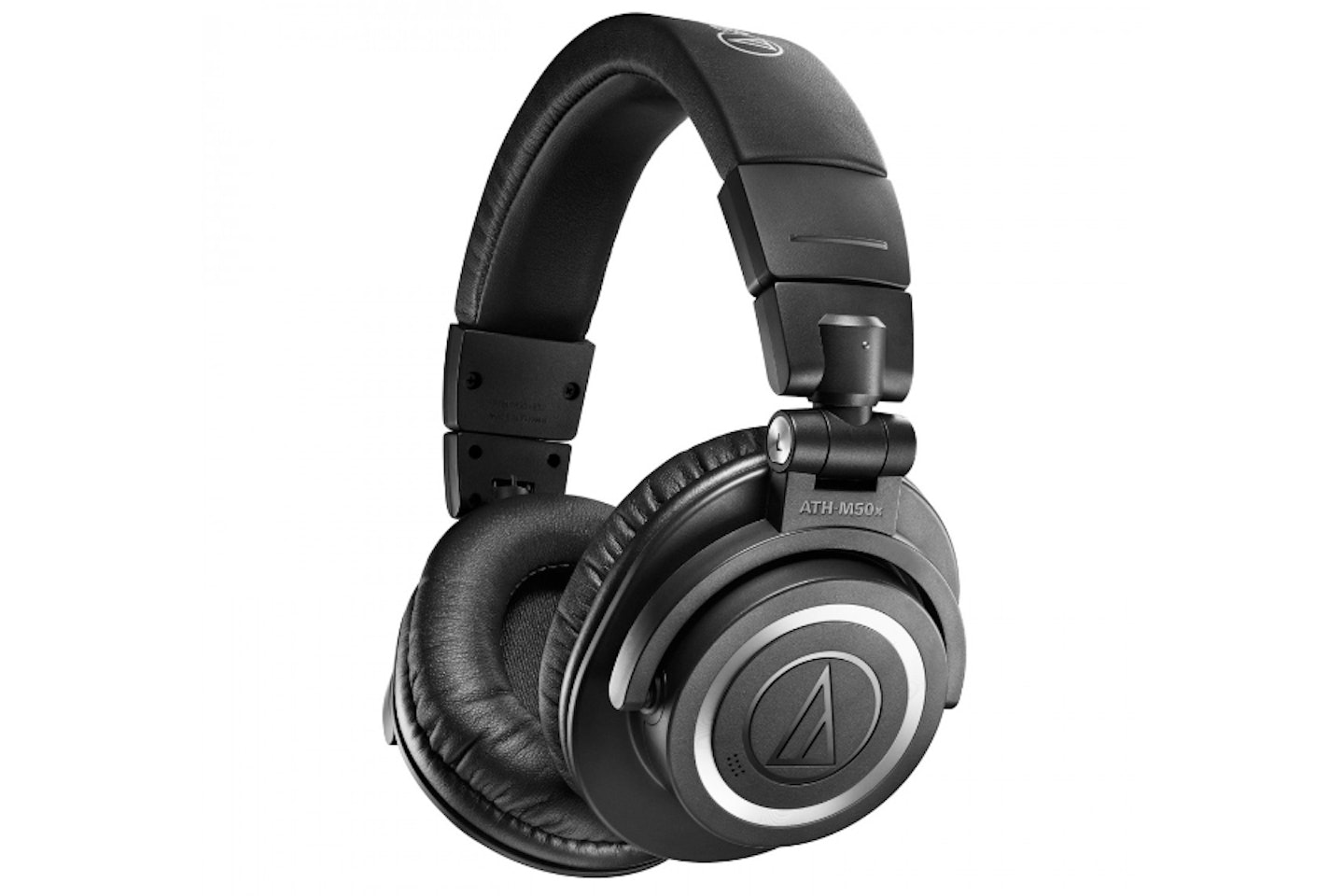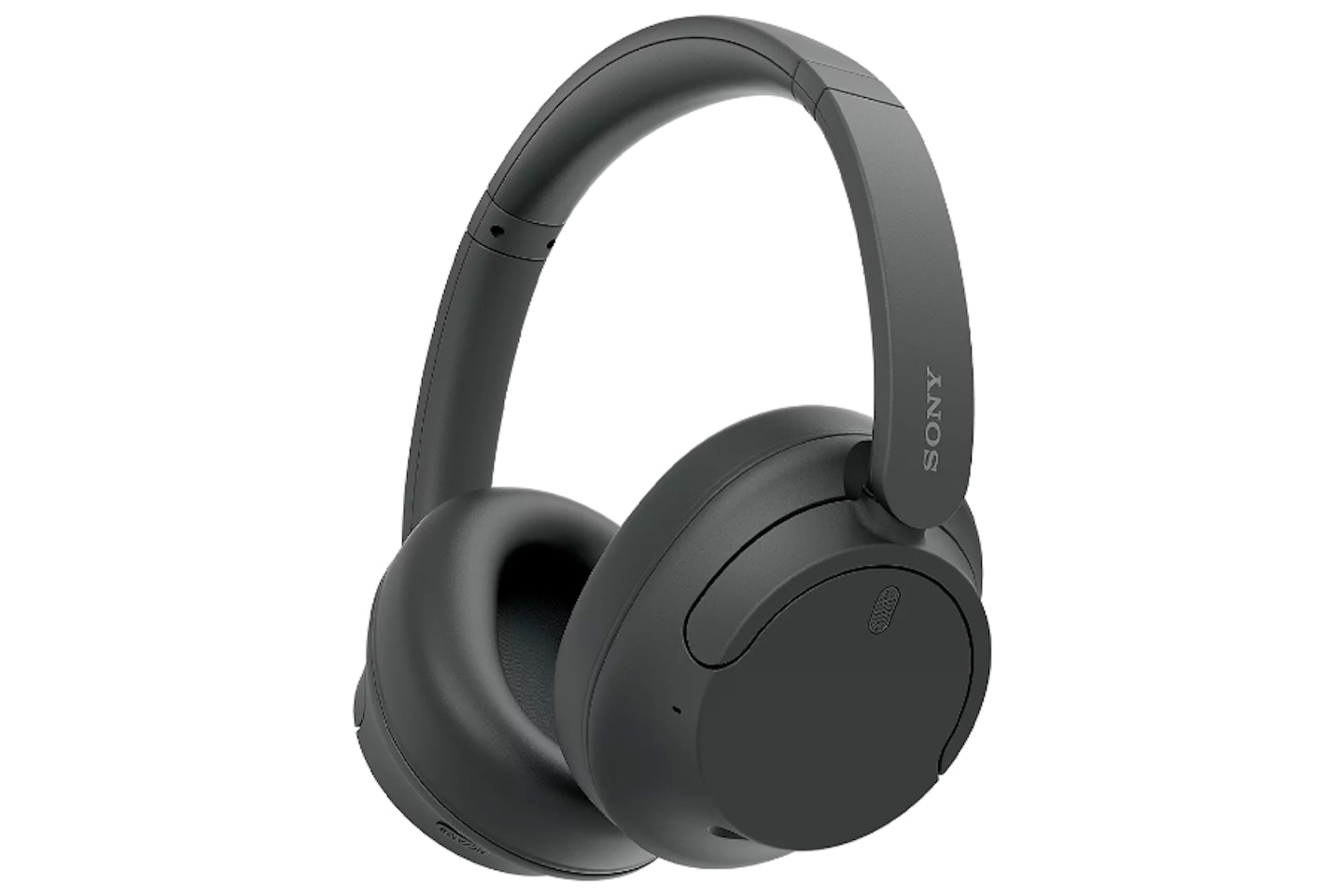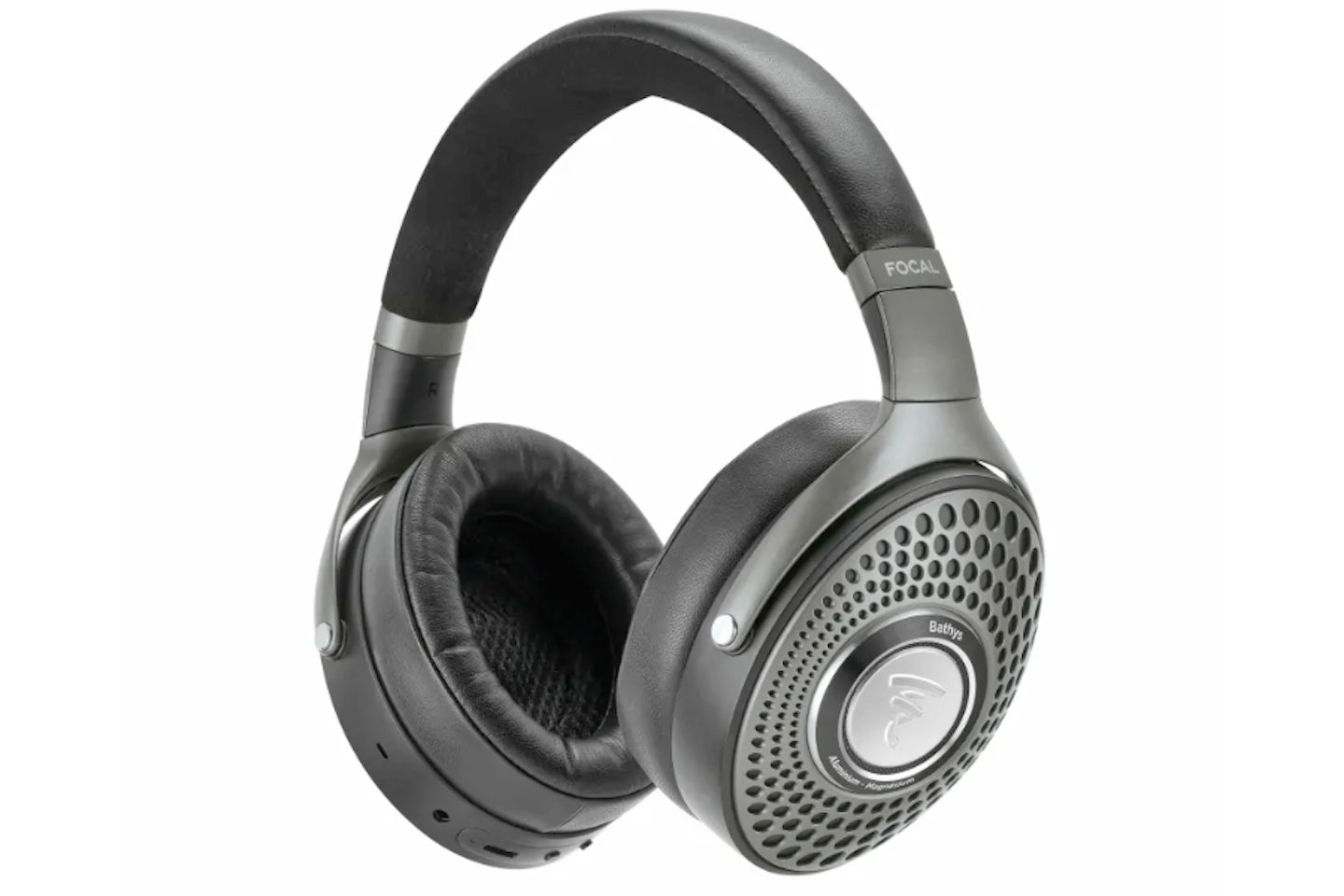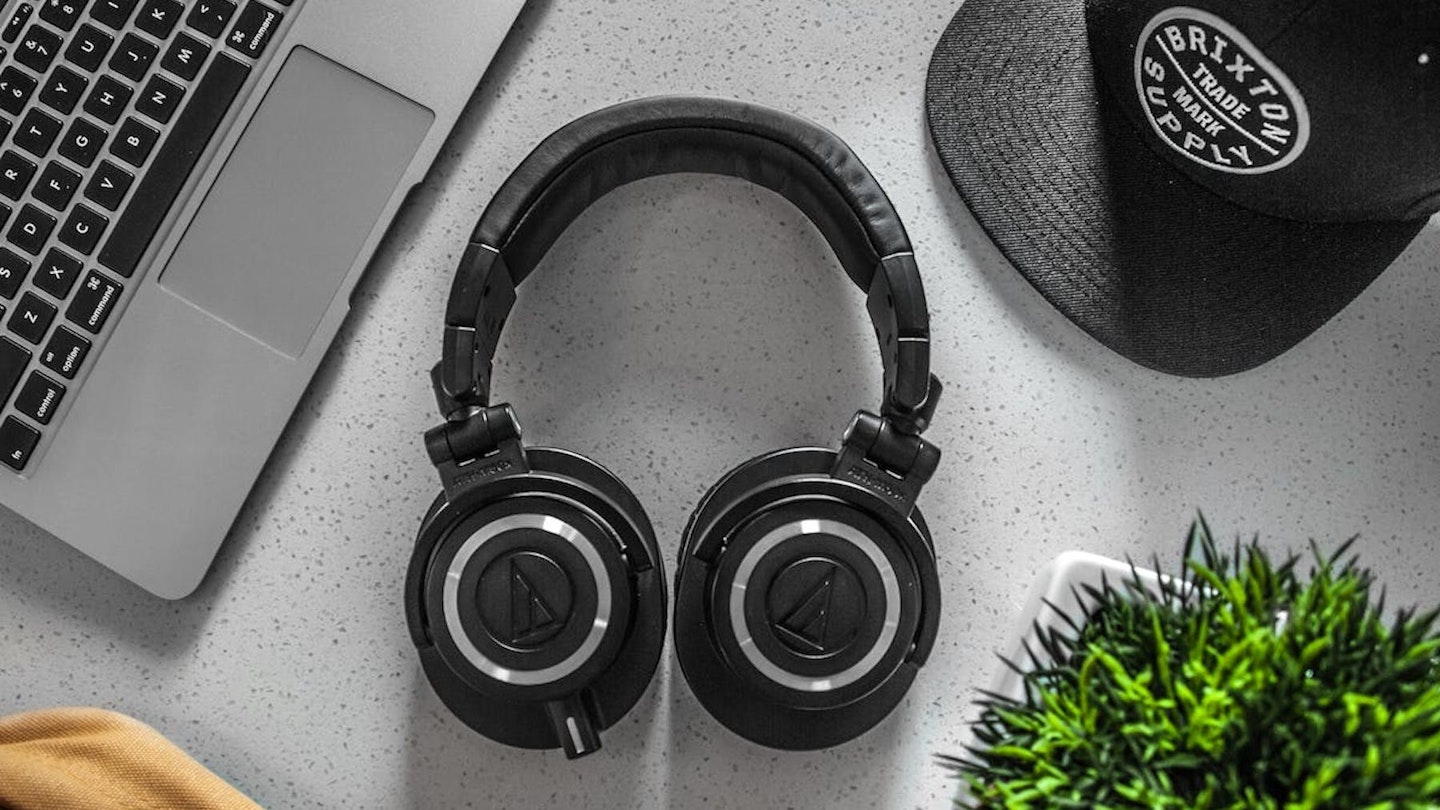Seen for a long time as an inferior sounding substitute for a proper pair of cans, wireless headphones were something of a dirty word among genuine audiophiles and music lovers.
While Bluetooth connectivity has always offered a tangle-free listening experience, in recent years the quality of the sound produced by wireless headphones has hit a level that can please even the most discerning of ears.
The Best Wireless Headphones In 2023 At A Glance
• The best overall - Sony WH-1000XM5 - View on Amazon
• The best for rock and guitar based music - Marshall Monitor II - View on Amazon
• The best for making music - Audio-Technica ATH-M50XBT2 - View on Gear4Music
• The best budget - Sony WH-CH720N - View on Amazon
There are many reasons for wireless tech gaining ground on wired headphone options. One is the development of new and improved Bluetooth codecs, which is the tech that encodes and decodes audio data, either end. Another is the use of higher-quality drivers, which are effectively the speakers of the headphone, converting electrical signals into audible sound - developments in dynamic drivers, which balances size with improved frequency ranges have been instrumental in improving the audio quality wireless headphones can produce. The final piece of the puzzle is the increasing popularity and availability of high-resolution streamed audio.
Another advantage of wireless headphones is that, unlike many of their tethered ancestors, they carry an array of features ideal for day-to-day life. Noise cancellation, also known as Active Noise Cancellation or ANC, can now genuinely silence the world around you, both reducing distraction and optimising the clarity of your music. Tap commands make skipping, pausing, and volume control a breeze, as does smart assistant support, which lets you issue voice commands to Siri, Alexa or Google Assistant.
While Bluetooth connection is an excellent choice for some, it’s becoming necessary for others. Many of us increasingly listen to music streamed from our smartphones, and it’s now common for manufacturers to ditch the 3.5mm jacks that allow you to hook up a trusted pair of wired headphones. While USB-C and Lightning-to-jack adaptors are available, they are pretty flimsy and fiddly, making the purchase of a proper wireless headphone the best course of action when you want to play some of your favourite albums on the go.
Below, we highlight our favourite options available today - accessibly priced, well-featured and, most crucially, capable of excellent audio performance.
The Best Wireless Headphones In 2023
The best wireless headphones overall

Combining a neat minimalist style with exceptional audio performance, the latest addition to Sony’s headphone line-up is one of the best buys out there.
The Sony WH-1000XM5s have cutting-edge 30mm drivers which outplay larger units and have audio clarity to spare - the sound has a balanced mid and high range with a good bass response, making them incredibly versatile, no matter whether you are listening to Kendrick Lamar or The Smiths. For those subscribed to a high-res streaming service, the Sony WH-1000XM5 carries the LDAC Bluetooth codec which transmits more data than conventional Bluetooth, granting access to the highest possible resolution audio.
Though heavyweight in audio performance, the construction of the WH-1000XM5 is anything but. At only 250g, they are light on the head and comfortable for hours of wear. The noise-cancelling is one of the best on the market. Wired connections are available, and the battery life is a very respectable 30 hours.
The only downside is that the previous generation, the Sony WH-1000XM4, is still available and has comparable audio quality for a cheaper price. However, the feature set and aesthetic isn’t quite as compelling.
Pros
- Exceptional audio performance
- Comfortable for long periods of use
- Excellent noise cancellation
Cons
- Previous generation comparable and cheaper
| Drivers | 30mm dynamic |
| Battery | Up to 30 hours |
| Charging | USB-C, 3.5 hours to full |
| Connection | Bluetooth 5.2, USB-C, AUX |
| Weight | 250g |
The best headphones for rock and guitar based music

The Marshall Monitor II headphones have 40mm drivers which balance an impressively powerful sound with subtlety and clarity. When we were testing these out, music really benefited from the excellent mid-range and balanced bass. Tracks fromFleetwood Mac’s Tusk were suitably layered and atmospheric, whileBlack Sabbath’s Vol. 4 was given appropriate levels of thunder and bite.
Supporting this sound performance is Active Noise Cancellation - the outside world fades away, immersing you completely in your music. However, given the powerful volumes the Monitor IIs are capable of, some sound leakage in the other direction is perhaps inevitable. It’s a minor drawback, but could make commuting on the quiet coach a gamble, and potentially attract a few stern looks.
Overall, the Marshall Monitor II headphones are perfect for when you want to really lose yourself in your music.
Pros
- Mid and bass ranges are ideal for rock
- Classic Marshall aesthetic
Cons
- Some sound leakage
| Drivers | 40mm dynamic |
| Battery | Up to 45 hours |
| Charging | USB-C, 2 hours to full |
| Connection | Bluetooth 5.0, USB-C, AUX |
| Weight | 320g |
The best wireless headphones for making music

www.gear4music.com
The Audio-Technica ATH-M50XBT2 are excellent professional-grade headphones with impressive sound quality. While they look unassuming, they pack in 45mm drivers for detailed listening.
Due to the various combinations of technology used in manufacturing headphones, many consumer headphones make alterations to sound quality, introducing deviations from the original audio by adding distinctive traits or characteristics. This can include slight shifts in frequency response or changes in tonal balance. This is called colouration, and you won’t be hearing any with the ATH-M50XBT2 - they have a brilliantly neutral audio which is faithful to the original sound. This is a benefit to both those listening back to their own music and music lovers who want to hear their favourite albums exactly as they were intended.
Additional features include an impressive 50-hour battery life, the option of wired connections, multi-point Bluetooth connectivity and a decent noise-cancelling system. However, as headphones that are designed to be used in the recording studio, they are pretty bulky, which gives them limited appeal for use outside of the house. While this size makes them very robust, it can make them uncomfortable during long listening sessions.
Pros
- Faithful sound
- Robust build
- Impressive 50-hour battery life
Cons
- Heavy and bulky
| Drivers | 45mm |
| Battery | Up to 50 hours |
| Charging | USB-C, 7 hours to full |
| Connection | Bluetooth 5.2, USB-C, AUX |
| Weight | 454g |
The best budget wireless headphones

Sony’s budget offering, the WH-CH720N headphones, are one of the best choices in their price range, boasting impressive features and delivering excellent audio performance for the price.
Despite their modest cost, the WH-CH720Ns deliver a subtle, rich sound with warmth. The stereo performance and frequency response work in tandem to give instruments room to breathe, preventing audio sounding muddled and ill-defined.
One of the biggest concessions at this price is the noise cancellation, which is merely adequate. Loud noises and distraction are dampened, rather than silenced. Still, the plush and silky ear cups ensure comfort during extended use and the 50-hour battery goes a long way to make up for this shortcoming.
Pros
- Bargain price for such good audio quality
- Comfortable for long periods
- Very long battery life
Cons
- Noise cancellation is bettered elsewhere
| Drivers | 30mm dynamic |
| Battery | Up to 35 hours |
| Charging | USB-C, 3.5 hours to full |
| Connection | Bluetooth 5.2, USB-C, AUX |
| Weight | 192g |
The best wireless headphones for noise cancellation

www.currys.co.uk
Bose has a long reputation for delivering both rich audio and excellent noise cancellation, and the Bose QuietComfort 45 is a worthy addition to their catalogue. With a balanced audio profile and isolating noise cancellation, these headphones offer a haven of peace, no matter how loud your surroundings.
The audio quality of the QuietComfort 45 is refined and offers sparkling highs, well-balanced mids and a tight, punchy bass - though fans of bass-driven music might want to head elsewhere as the low end doesn’t push through as much as on some of the other options listed. The audio frequencies are wide and well-spaced, giving good instrument separation and spatial clarity. These headphones also support high-resolution audio and have a 22-hour battery life.
Pros
- Tight, well-balanced sound
- Good instrument separation
- Excellent noise cancellation
Cons
- While punchy, the low-end struggles to push through the mix on bass-heavy tracks
- Better battery life found elsewhere
| Drivers | Not advertised |
| Battery | Up to 22 hours |
| Charging | USB-C, 2.5 hours to full |
| Connection | Bluetooth 5.1, USB-C, AUX |
| Weight | 240g |
The best premium wireless headphones

www.selfridges.com
Focal’s Bathys headphones showcase the premium brand’s reputation for building top-notch audio equipment, even if this model heralds from its budget – by their standard - range. The repetitious hole pattern design may not appeal to everyone, but the battery life is impressive, lasting up to 42 hours without Active Noise Cancellation, which is excellent. The Bluetooth audio quality is outstanding too, offering a lively, spacious, and precise sound. Even the accompanying app is well-designed and easy to use.
However, the standout feature of the Bathys is its high-quality Digital-to-Analogue Converter, also known as a DAC. This is an electronic component that converts digital audio signals into analogue audio signals.
When connected via USB-C, it surpasses the built-in DAC of your device and uses its own to provide lossless audio. Lossless audio is a digital audio compression method that preserves the full original sound quality by compressing the audio file without discarding any data, ensuring no loss of fidelity. Essentially, it allows for exact reconstruction of the original audio waveform when decompressed. This is in contrast to ‘lossy’ audio compression, which most Bluetooth connections use, which sacrifices some data to achieve smaller file sizes, but can result in a degradation of audio quality.
Basically, the result for the listener is a significantly improved audio experience with more precise, higher-quality, and louder sound. This enhancement is a genuinely revolutionary development in the market and it’s what really sets the Bathys apart from the other entries in this list.
Despite its exceptional audio performance, the Bathys’ higher price tag of £700 mainly stems from its premium DAC, which might be more appealing to audiophiles willing to invest. For those seeking everyday Bluetooth headphones with excellent value for money, the Sony WH-1000XM5 might be a more suitable option.
Pros
- Superb audio performance, including lossless support
- Great battery life
- Comfortable enough for daily use
Cons
- DAC requires wired connection
- High price
| Drivers | 40mm, Focal designed Aluminium-Magnesium |
| Battery | Up to 45 hours |
| Charging | USB-C |
| Connection | Bluetooth 5.1, USB-C DAC, AUX |
| Weight | 350g |
A buyer’s guide to wireless headphones
Here are some key things to look for when buying new wireless headphones:
Sound: Opt for headphones with good sound quality that aligns with your musical tastes. For example, if you’re mainly going to be listening to hip hop, dub or electronic music then the bass is clearly going to be high on your priorities. If you’re into neo-classical, folk or ambient, however, then you’re going to want more definition and clarify at the higher ends. Across the board, look for balanced audio, clear vocals, and defined bass without overwhelming distortion.
Battery: Consider the headphones’ battery life, especially if you plan to use them for long periods or during travel. Look for models with sufficient playback time on a single charge. Many options offer quick charging, giving you around three hours of playback from a quick 10-minute charge.
Comfort: Ensure the headphones fit comfortably and securely on your ears. No matter how good the sound, comfort is crucial, especially if you intend to wear them for extended periods.
Noise Cancellation/ANC: If you frequently find yourself in noisy environments or want to immerse in your music, noise-cancelling headphones can be a valuable feature to consider.
Connectivity: Check the wireless connectivity options, such as Bluetooth versions and device compatibility. Some headphones may offer additional features like multi-point pairing to connect multiple devices simultaneously.
Controls and features: Some models may have touch controls or physical buttons for actions like play/pause, volume adjustment, and answering calls.
Portability: Consider the portability of the headphones, especially if you plan to use them on the go or while travelling. Foldable or compact designs can be advantageous for easy storage instead of larger studio and home options.
Price: Set a budget and look for headphones that fit within your price range while still meeting your desired features and quality.
The pros and cons of using wireless headphones
The convenience of wireless headphones lies in their hassle-free usage. Wireless headphones offer freedom of movement, ideal for listening on the go, during workouts and commuting. They are compact and lightweight, ensuring easy portability and increasingly robust durability.
There are a few drawbacks, however. While the battery life of the best wireless headphones is generally great, they do require charging, which wired options don’t. Secondly, latency can be an issue, causing a delay between audio generation and playback, which may be noticeable in activities like gaming. Lastly, the price of wireless headphones is generally higher than wired ones.
Headphone drivers
Headphone drivers are components responsible for converting electrical signals into sound. They consist of magnets, voice coils, and diaphragms. The driver size refers to the diameter of the diaphragm, usually measured in millimetres. Larger drivers generally produce more powerful bass and better overall sound quality due to increased air displacement. Smaller drivers are lighter and more portable but may sacrifice some sound depth. Dynamic drivers are common in over-ear and on-ear headphones, offering a good balance between size and sound quality.
How does Active Noise Cancellation work?
With Active Noise Cancellation, or ANC, microphones detect external sounds and use this information to create anti-noise signals. These anti-noise signals have the exact opposite sound waves of the incoming ambient noise but with the same amplitude. When mixed with the audio content, the anti-noise signals cancel out the ambient noise through destructive interference, reducing its impact on the listener.
This technology effectively eliminates low-frequency sounds, such as background hums. However, it may have limitations in cancelling sudden or irregular sounds. ANC provides a quieter listening environment, allowing users to enjoy their music or calls with increased clarity and reduced distractions from the surrounding environment.
What is Bluetooth, and how does it work?
Bluetooth is a wireless communication technology that exchanges data between devices within a short range. Gadgets like smartphones, laptops, headphones, and speakers, use Bluetooth to connect and share information without needing physical cables. During pairing, two devices exchange security keys to create a secure link.
Bluetooth enables data transfer, such as audio, video, files, and control commands. Its range is typically around 10 metres.
What is a Bluetooth codec?
Bluetooth codecs encode and decode audio data when transmitted between Bluetooth devices. It determines how audio is compressed for transmission and decompressed for playback on the receiving device.
Different codecs have varying audio quality and latency levels, and their usage depends on the devices’ compatibility and capabilities. Bluetooth codecs include SBC, AAC, aptX, and LDAC.
What is a DAC?
A DAC, or Digital-to-Analogue Converter, is a crucial electronic component that converts digital audio signals into analogue audio signals. It plays a vital role in audio playback devices like smartphones, laptops, and music players.
When digital audio is stored or transmitted, it exists in a series of 0s and 1s. To produce sound through a speaker or headphone driver, it must be converted back into electrical signals with varying voltage levels. This is where the DAC comes in, translating the digital data into an analogue waveform that can be amplified and transformed into sound, ensuring high-quality audio output for a more enjoyable listening experience.
BECOME A MOJO MEMBER today and receive every new issue of MOJO on your smart phone or tablet to listen to or read. Enjoy access to an archive of previous issues, exclusive MOJO Filter emails with the key tracks you need to hear each week, plus a host of member-only rewards and discounts.
